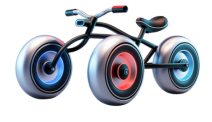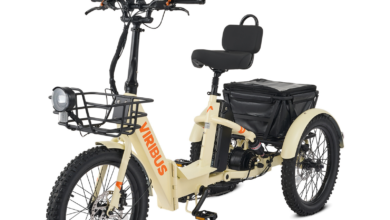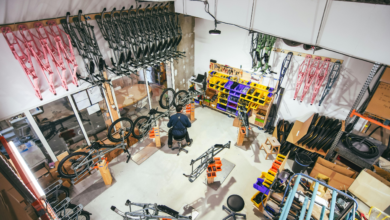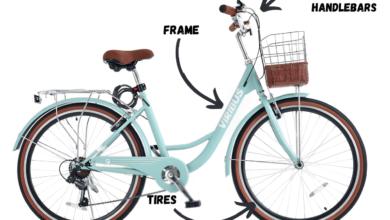How to Use Bike Gears
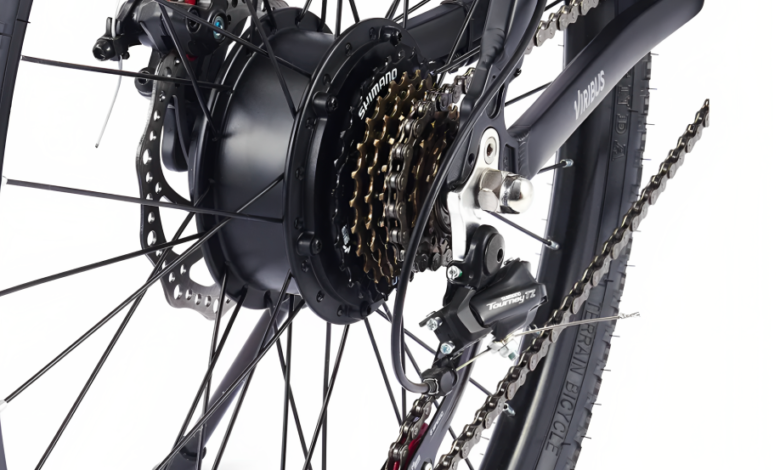
Bike gears are the mechanism that helps you regulate how much effort you need to pedal your bike. By shifting the bike gears, you either increase or decrease the resistance on the pedals, making it easier or harder to pedal your bike forward on different kinds of terrain.
Most types of bikes have either 3-speed gears, 7-speed gearing systems, or 21-speed gearing systems.
3-speed gears have 3 gear options: low, medium, and high, and they are best for city riding, flat terrain, and short commutes
7-speed bikes usually feature an external derailleur system and have 7 cogs on the rear cassette. They offer more range and are more suitable for riding on varied terrain. They are popular for urban riding and can overcome mild hills.
21-speed gear systems feature 3 front chainrings and 7 rear cogs (3×7), and they provide an even wider range of gear combinations (21 in total).
Contents
How do Bike Gears Work?
The theory of how bike gears work is rather simple: switching from one gear to another changes the relationship between how fast you pedal (cadence) and how fast your bike moves (wheel speed)
The gear system does this by switching the chain between gears of different sizes, which are located either at the front (chainrings) or the rear (cassette or cogs).
- Gears located at the front are called chainrings
- Gears located at the back are called the cassette or cogs.
Changing these gears alters the relationship between the cadence and wheel speed and regulates how much force you need to pedal.
Lower gears make it easier to pedal and are better for going uphill or starting
Higher gears make it harder to pedal, but are better for going faster on flat or downhill terrain
How to Use Your Bike Gears
To use your bike gears effectively, you have to optimise them in a way that matches your pedalling effort to the kind of terrain you are riding on.
- If you are going downhill, for example, switching to a lower gear may mean the bike spins too fast, which is dangerous.
- If you are going uphill, switching to a higher gear will mean you have to put in much effort to move the bike, which is exhausting.
You always need to change the gear to match the terrain, speed and pedalling effort you need.
You must always remember the rule to remember when it comes to using bike gears:
- Lower gears make it easier to pedal
- Higher gears make it harder to pedal.
Going downhill, choose a higher gear. For going uphill, choose a lower gear. For flat, even roads, choose a medium gear.
On a 7-speed adult tricycle like the Viribus TG1 Electric Tricycle , for example, you want to make it as easy as possible to pedal to achieve the most motion with your pedalling. You shift your bike gears to level 1, which is the easiest.
If you are going downhill, there is no need for easy pedalling: you can shift your bike gears to 7, which is the hardest to ride.
Most people usually ride on flat, level terrain, which means they mostly ride at about the fourth or fifth gear.
When to Switch Bike Gears
As a rule, you know it is time to change your bike gear when there is a mismatch between the effort you are putting into pedalling and the type of terrain you are riding on.
- If you are riding uphill in the wrong gear, for example, pedalling may become really demanding.
- If you are riding downhill on the wrong gear, pedalling may feel a little too easy, and your bike may go so fast it threatens to spin out of control.
Also, you should switch gears whenever there are changes to your riding speed and situation: say you are going around a bend, or starting from a stop.
Here is a table with some situations where you need to change your bike gear:
| Situation | Best Gear Choice |
| Starting from a stop | Low gear (small front ring, large rear cog) |
| Climbing hills | Low gear |
| Flat terrain/cruising | Medium gear |
| Going downhill / sprinting | High gear (large front ring, small rear cog) |
| Approaching a stop | Shift to low gear before you stop |
Your bike shouldn’t always be in just one gear: always switch to a gear that lets you pedal smoothly without straining, and sprinting too fast.
Practical Tips for Using Gears
- Anticipate terrain: Shift to a lower gear before a hill, not halfway up.
- Use the rear gears often for small adjustments.
- Use front gears sparingly, typically only for major changes.
- Avoid cross-chaining (e.g., smallest front + smallest rear or largest + largest). It causes excess wear on the drivetrain.
Types of Bike Gears: 3-Speed vs 7-Speed, 21-Speed
The main differences between 3-speed, 7-speed, and 21-speed bikes lie in the gearing style, range of gears and ease of use, and even cost.
| Feature | 3-Speed | 7-Speed | 21-Speed |
| Gearing Style | Internal hub | Rear derailleur | Front + rear derailleurs |
| Gear Range | Basic | Moderate | Wide |
| Ease of Use | Very easy | Easy | Moderate complexity |
| Maintenance | Low | Moderate | Higher |
| Best Use | Flat cities | Urban & light hills | Mixed terrain, trails, hills |
| Cost | Medium | Budget-friendly | Varies (mid to high) |
How do Bike Gears work on a mountain bike vs a road bike?
Both road bikes and mountain bikes use the same basic gear principles; however, they are designed for different uses and different terrain, which means there are a few differences in how their gearing systems generally work.
Mountain Bike Gears
Mountain bike gears are designed to offer a wider range of gearing options to help riders stay in control on more challenging terrain. The Panther Electric Mountain Bike has a Shimano 21-speed gear shift system, providing you with the perfect balance of speed and stability.
A mountain bike gear system will typically consist of 1 or 2 front chainrings and 10-12 rear cogs with a wide range of sizes.
- The lower gears are typically lower for more torque for slow, steady climbs
- The higher gears are designed to help the rider build speed on flats and downhills.
Mountain bike gears are also controlled by shifters on the handlebars, and they move the chain via derailleurs.
City Bike Gears
City bike gears are designed for speed, rhythm, and endurance on mostly smooth terrain. They typically consist of 2 front chainrings and 10-122 rear cogs on the cassette, and they are controlled by integrated shifters.
City bike gearing focuses on cadence control to keep your pedalling speed steady.
Road Bike Gears vs. Mountain Bike Gears
The jumps between gears are also smaller to let you adapt to different terrain and situations without any major changes in your rhythm.
| Feature | Road Bike Gears | Mountain Bike Gears |
| Purpose | Speed, cadence control, endurance | Climbing, control, and technical terrain |
| Front Chainrings | Usually 2 (compact or standard) | 1 or 2 (1x or 2x setup) |
| Rear Cogs (Cassette) | 10–12 closely spaced | 10–12 wide-range gears |
| Gear Range | Narrow-to-moderate range | Very wide range |
| Shifter Type | Integrated with brake levers | Trigger or twist shifters |
| Low Gear (Easy Pedalling) | Smaller front + larger rear | Smaller front + much larger rear |
| High Gear (Harder Pedalling) | Larger front + smaller rear | Larger front + smaller rear |
| Best Terrain | Pavement, rolling hills, descents | Trails, steep climbs, and technical features |
| Shifting Strategy | Frequent rear shifts, occasional front shifts | Quick shifts, often big changes in terrain |
| Cadence Focus | Maintain 80–100 RPM | Adapt cadence to terrain for control and traction |
| Cross-Chaining Caution | Yes, avoid extreme combinations | Yes, avoid unnecessary stress on the chain |
| Ease of Use | Moderate learning curve | Simpler if a 1x drivetrain is used |
| Maintenance | Medium | Varies (1x setups = simpler) |
- Road bikes aim for smooth, efficient riding over long distances and rolling terrain
- Mountain bikes focus on adaptability, control, and torque for off-road and technical rides.
Always check if a tricycle comes with a sufficient gearing system, especially if safety and ease of use are top priorities for you.A sturdy, reliable parking brake is one of the reasons why Viribus adult Tricycles are some of the best adult tricycles for adults out there.
Here is a breakdown of the best three adult tricycles you can afford from the Viribus collection.
As a self-proclaimed bicycle fanatic, I’m James Carter, and I’ve been riding and racing bikes for over 20 years. Sunshine California is where I was born and raised. Now I live in Boulder, Colorado. I know a lot about designing and fixing bikes, and I’ve written for a few well-known bicycle magazines. I want to use easy language to explain complicated technology so that everyone can enjoy riding a bike.
